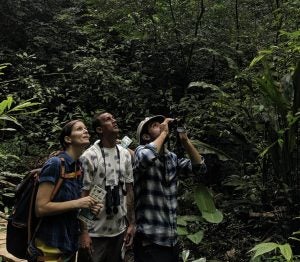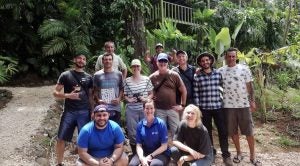 Given that so much of our work takes place on private land in working landscapes, we are passionate about broadly disseminating our findings and conducting community-engaged research. To that end, we strive to engage with growers, conservation practitioners, industry officials, regulators, and others through all stages of the research process. Some of the strategies we use include…
Given that so much of our work takes place on private land in working landscapes, we are passionate about broadly disseminating our findings and conducting community-engaged research. To that end, we strive to engage with growers, conservation practitioners, industry officials, regulators, and others through all stages of the research process. Some of the strategies we use include…
(1) Distributing individually-tailored reports to key stakeholders and study participants. For example, we wrote and disseminated reports to ~200 households, government officials, and conservation organizations in Costa Rica, in which we synthesized our research and gave guidance for ongoing reforestation efforts in the region. Similarly, in California, we worked with an interdisciplinary team to develop reports that detailed the food-safety risks, bird community composition, and soil health associated with each grower participant’s farm.

(2) Helping organize workshops for growers, industry stakeholders, regulators, and/or other community members focused on exchanging ideas about best practices and building capacity. For example, we have collaborated with the Wild Farm Alliance on grower field days, outreach videos (see below), and online courses focused on conserving birds in agricultural landscapes. We also have held bird identification workshops, mist-netting demonstrations, and research workshops with communities near our field sites in Costa Rica.
(3) Coupling our research publications with outreach materials designed to share our work broadly and guide policy. For example, we produce policy briefs (e.g.), press releases (e.g.), popular press articles (e.g.), and videos (see below). We also interact with policy makers directly. For example, Danny testified before the Monterey County Water Control Board about the impact of riparian buffers on foodborne pathogens around farms.